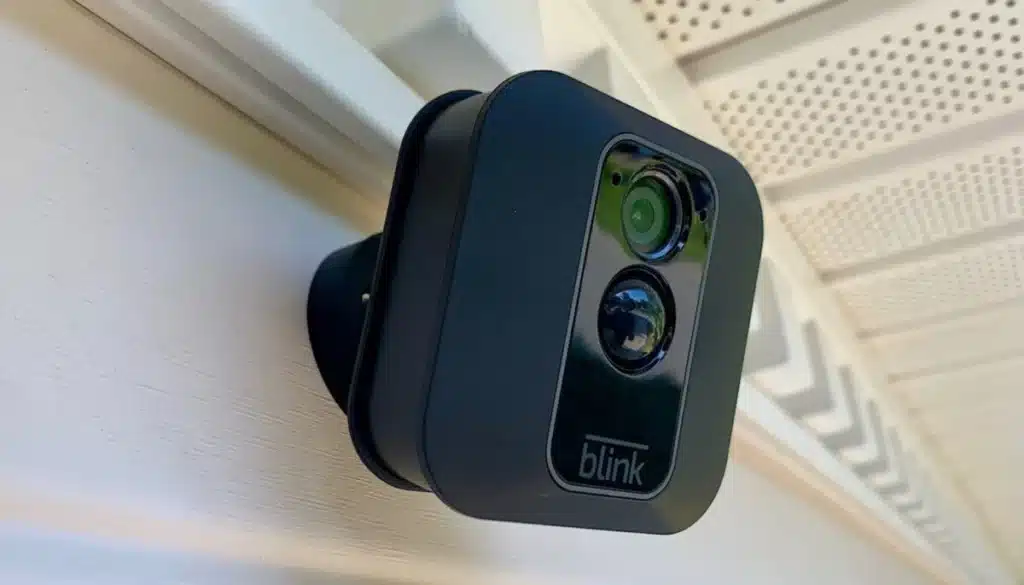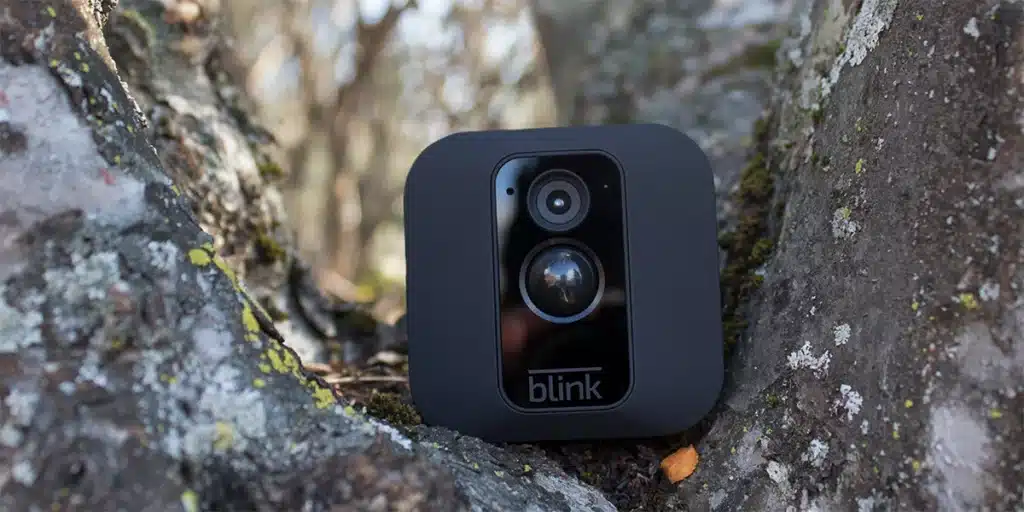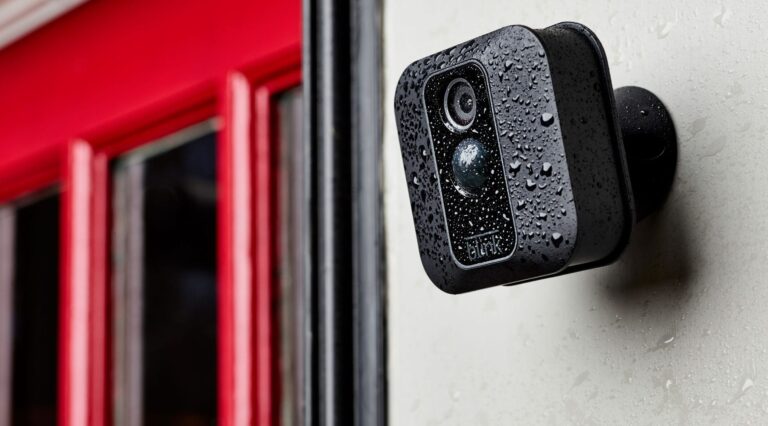Introduction
The advancement of smart home technology has revolutionized the way we secure and monitor our properties, and Blink cameras have emerged as a popular choice among homeowners seeking efficient and easy-to-use surveillance solutions. As these wireless cameras offer motion-based recording and long-lasting battery life, many users wonder if Blink cameras can record continuously, providing uninterrupted coverage of their surroundings.
In this introductory exploration, we delve into the question: “Can Blink cameras record continuously?” Understanding the recording capabilities of Blink cameras is essential for making informed decisions about home security and determining whether these devices align with specific surveillance needs.
Blink cameras are meant to be power-efficient to conserve battery life in contrast to conventional professional-grade surveillance equipment that enable continuous recording. As a result, Blink cameras do not support continuous recording as a default option. Instead, they utilize an intelligent motion-based recording mechanism, triggered by detected movement within the camera’s field of view.

How long can a blink camera continuously record?
Do Blink Cameras Record Continuously? Blink cameras, alas, only record when they detect motion, not always. With a subscription plan, you’ll only be able to look at Live View continuously, but even that has a time limit. After 90 minutes, Live View will stop.
The duration for which a Blink camera can continuously record, or rather, the duration of motion-based recording, depends on several factors:
Motion Activity
If there is frequent motion activity within the camera’s field of view, it will trigger more recordings, and the camera will capture more clips over time.
Clip Duration
Through the camera settings, you can modify the duration of video clips recorded in response to motion detection.Longer clip durations may use more storage and impact the overall recording duration.
Cool-Down Period
The cool-down period after each triggered clip prevents immediate retriggering and conserves battery power. Adjusting the cool-down time in the camera’s settings will change how often it records.
Storage Capacity
The amount of recorded footage that a Blink camera can store depends on the available cloud storage space. Blink offers free cloud storage for a limited number of clips per camera and additional storage options through subscription plans.
Because they can only record for a short time, Blink cameras could not be the best choice for people who need to keep an eye on things all the time. But the motion-based recording process is a quick and useful way to remember important events while reducing the number of unnecessary recordings and saving space.
Can you watch Blink camera live continuously?
Extended Live View
This feature provides images and sound directly from a camera to the Blink app, up to 90 minutes at a time without user intervention. In addition, you can view regular Live View sessions up to five minutes without tapping on Continue.
To use Live View, simply open the Blink app on your smartphone or device, select the camera you wish to view, and tap on the “Live View” option. You can watch the video camera’s streams in real time after the live broadcast has begun.
Live View provides a real-time video feed, but due to the device’s energy-saving design, you can’t keep it going for too long at a time. Continuous live streaming would require a constant data connection and could significantly drain the camera’s battery.
The motion-based recording mechanism ensures that the cameras focus on relevant activities and events, making them an efficient and practical solution for home security.
How do I continuously monitor my blink camera?
Tap Live View in the home screen.
- Then tap the More menu button in the bottom right of your screen (displays with a red dot the first time you use this feature).
- A screen then displays explaining the terms of Extended Live View, which runs up to 90 minutes; however, you can’t save the session as a clip.
Live View
While Blink cameras do not support continuous live streaming, they do offer a “Live View” feature, which allows you to manually access a live video feed from your camera on-demand. This way, you can check in on your property whenever you want to see the camera’s current perspective.
Blink XT2 Continuous Recording Mode
The Blink XT2 camera model has a unique “Continuous Recording Mode” feature, but it’s essential to note that this feature does not offer true continuous recording. Instead, it records short video clips continuously and saves them to the cloud. However, this mode can lead to increased data usage and storage consumption.
Blink Sync Module
Using a Blink Sync Module with your Blink cameras can enhance their functionality and enable more advanced features. The Sync Module acts as a bridge between your cameras and the Blink cloud servers. It can extend the camera range, improve battery life, and provide additional storage for recorded clips.
Third-Party Solutions
Some third-party apps or software may offer more continuous monitoring options by integrating with your Blink camera system. However, be cautious when using third-party solutions and ensure they are compatible with Blink cameras and do not violate any terms of service.
Camera Placement
Strategically place your Blink cameras to cover critical areas where you want more consistent monitoring. Adjust the camera’s field of view and motion sensitivity settings to capture relevant events while minimizing false activations.
Scheduled Armed Mode
If your Blink camera allows you to schedule the armed mode, you can create custom schedules to arm the camera during specific times when you need more monitoring coverage.
Battery or AC Power
Some Blink camera models, such as the Blink XT2, offer the option to use an AC power adapter instead of batteries. The AC power adapter keeps the camera powered at all times, allowing for more reliable surveillance.
Why does Blink camera stop recording?
Battery Life
A low battery can lead to insufficient power, resulting in compromised motion recording. To prevent such issues, make it a point to keep your camera’s battery charged or purchase additional batteries for optimal performance.
Here are the primary reasons why Blink cameras stop recording:
Motion-Based Recording
Intelligent motion sensors in Blink cameras begin recording whenever something moves within the camera’s range of vision. A small video clip, ranging anything from a few minutes to a few minutes in duration, is recorded by the camera whenever motion is detected.
Cool-Down Period
After the camera has recorded a clip in response to motion, it will wait a predetermined amount of time (the clip interval) before recording another clip, irrespective of whether motion is detected during that time. Battery life can be conserved and needless recordings can be avoided, especially in situations where there is continual or frequent motion, by using this cool-down interval.
Motion Activity
If there is minimal or no motion activity within the camera’s field of view, the camera will not trigger any recordings, and it will appear as if it has stopped recording. This behavior is expected and helps conserve battery power.
Disarmed Mode
The camera’s ability to detect motion and record footage is momentarily turned off when the switch is moved to the “disarmed” position. The camera is currently disarmed and will not begin recording until it is re-armed.
Low Battery
When the battery level of the Blink camera becomes critically low, the camera may stop recording to preserve the remaining battery power for essential functions. It is crucial to replace or recharge the batteries promptly to ensure continuous surveillance.
Limited Cloud Storage
Blink cameras come with limited free cloud storage for a specific number of recorded clips per camera. The camera might cease recording if the memory is full unless some older recordings are removed first.

Do Blink cameras have local storage?
You enable local storage by connecting a USB flash drive—it supports up to 256 GB—another thing to buy. Once connected, the Blink app may ask you to format the drive before it can record. After formatting completes, the USB drive is ready to save your videos.
If your Blink camera has a Sync Module, it will automatically upload the recorded video via the Wink cloud servers whenever it senses motion. There is only so much storage capacity in the Blink cloud for each lens, therefore for the purpose to make room for newer movies, the cloud may purge older ones automatically.
While Blink cameras do not have local storage options by default, they do offer cloud storage plans for users who require more storage capacity. Blink’s subscription plans, such as Blink Plus and Blink Subscription Storage, provide additional cloud storage options to retain more recorded clips for longer durations. These plans also come with other benefits, such as extended clip history and added support for multiple cameras.
For efficiency and portability, Blink cameras save their information in the cloud as opposed to locally. Local storage options, such as using microSD cards or external hard drives, may require constant power and may not align with the camera’s intended design.
Why does my blink camera record every hour?
If your camera loses internet connectivity, it continues to capture images every hour.
If your Blink camera is recording every hour, there could be several reasons behind this behavior. Let’s explore some potential explanations for why your camera might be recording on such a regular schedule:
Camera Settings
Check the camera settings in the Blink app or web portal. It’s possible that you have set up a specific schedule or interval for the camera to record. If you have scheduled the camera to record at certain times or with a specific frequency, it may be triggering recordings every hour.
Motion Detection Sensitivity
High motion detection sensitivity can cause the camera to interpret slight changes in the environment as motion, leading to frequent recordings.
Motion in the Field of View
Frequent motion within the camera’s field of view can trigger recordings every hour. Objects in motion, changes in lighting, or even natural phenomena like swaying tree branches could all play a role in this.
Camera Placement
The camera’s placement might be capturing constant movement in its vicinity. Consider adjusting the camera’s position or angle to focus on specific areas of interest and minimize unnecessary recordings.
Cool-Down Period
Even if motion is detected, Blink cameras will not take any fresh footage until after a certain amount of time has passed. If the lens is always on, it may record regularly due to motion detection and after a cool-down time of one hour.
Camera Interference
Interference from other wireless devices, strong Wi-Fi signals, or nearby electronic equipment could be causing false motion detections, leading to frequent recordings.
Firmware Issues
Occasionally, firmware updates or software glitches may cause unexpected camera behavior. Check for any available firmware updates for your camera model to ensure it is running the latest software version.
Do Blink cameras have audio?
The Blink Wired Floodlight, Video Doorbell, Outdoor and Indoor (3rd Gen), Mini, and XT2 cameras have two-way audio. This allows you to speak through the camera’s speaker and listen to the camera microphone for a two-way conversation.
The audio features of Blink cameras include:
Audio Recording
Blink cameras can capture audio along with video when recording motion-triggered clips. This means that in addition to seeing what’s happening, you can also hear the sounds in the camera’s environment during the recorded event.
Two-Way Audio
Blink cameras allow for two-way audio communication. Through the Blink app, you can speak and listen to individuals near the camera’s location. This feature is particularly useful for communicating with family members or pets, providing delivery instructions to couriers, or even deterring potential intruders.
Audio Playback
When you view recorded clips in the Blink app or web portal, you can listen to the audio recorded during those events. This feature allows you to gain a more comprehensive understanding of the situation during playback.
Audio Settings
Blink cameras offer options to enable or disable audio recording and two-way audio communication. Users can adjust these settings based on their preferences and privacy requirements.
The audio functionality on Blink cameras enhances the overall surveillance experience, offering users a more comprehensive understanding of the events captured by the camera. Whether you want to keep an eye on your home or communicate with individuals at the camera’s location, the audio feature adds a new dimension to your home security setup.
Can 2 Blink cameras record at the same time?
And after researching a bit on this topic, I found the answer. Two Blink cameras can record at the same time. To do this, pair both Cams to the Blink app.
if one Blink camera detects motion on the front porch while another camera detects motion in the backyard, both cameras will record their own video clips based on their motion triggers.
However, it’s essential to consider the camera’s cool-down period, which is a short interval during which the camera will not record additional clips, even if motion is detected. The cool-down period is intended to prevent constant recording and conserve battery life.
If multiple cameras detect motion within their cool-down periods, they will trigger recordings based on the individual motion events. Once the cool-down period for each camera ends, they will be ready to record again if additional motion is detected.
Conclusion
Blink cameras are not designed to record continuously by default. Instead, they utilize an intelligent motion-based recording mechanism, which triggers video recording only when motion is detected within their field of view. This design choice serves multiple purposes, including optimizing battery life, conserving storage capacity, and ensuring efficient home security surveillance.
The motion-based recording feature of Blink cameras offers several benefits. It reduces the amount of irrelevant footage captured, making it easier for users to review and analyze critical events. Moreover, it minimizes the need for constant battery replacements, as the cameras focus on recording significant motion events rather than continuously running.
While Blink cameras do not support continuous recording, they do provide other valuable features, such as the ability to access live video through the “Live View” feature. This allows users to check on their property in real-time, albeit on-demand rather than in a continuous stream.

